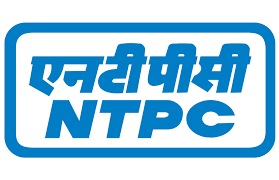New Delhi
A program to mark the beginning of eye donation fortnight from Aug 25 to 8th Sep 2018 is being organized by the Department Of Ophthalmology, Sir Ganga Ram Hospital and the Rotary Club, Delhi Central.
Dr. Promila Gupta, Principal Consultant & Former Director General Health Services, Ministry of Health. Govt. of India and Dr. Sangeeta Abrol , Deputy Director General (Ophth). Ministry of Health, Govt. of India were present at the occasion.
Shri Ashok Chandra, Chairman, Trust Society, Sir Ganga Ram Hospital; Dr. D.S. Rana, Chairman Board of Management, Sir Ganga Ram Hospital and Mr. Vinay Bhatia, Rotary District Governor graced the occasion.
The Rotary Central eye bank, in its nearly 30 years since inception has collected over 1500 pairs of eyes. Over 2000 patients, most of them poor and indigent have been given the gift of sight. The eye bank is equipped with the latest and the best, including clinical and eye bank specular microscopes. It is pursuing the cause of eye donation actively. It is a measure of the commitment of the hospital management that most trustees and board members have pledged their eyes.
India is home to the largest number of blind in the world – There being about 12 million blind in the country. A significant cause of blindness the world over is diseases of Cornea- the transparent glass in front of the eye. Blindness due to the corneal diseases is specially important as it affects the young and productive segments of the population with profound socio economic impact. According to the National Programme for Control of Blindness (NPCB) estimates, there are currently 1.2 million corneal blind in the country. Approximately 25 to 30 thousand corneal blindness cases are added every year. It is projected (Dandona et al 2003 ) that there are approx 6.8 million people who have vision less than 6/60 in at least one eye due to corneal diseases. It is estimated that the number of individuals with unilateral corneal blindness will increase to 10.6 million by 2020.
This corneal blindness can be adequately tackled by corneal transplantation. However, the absence of donor corneal tissues has been a major impediment. There were approximately 52 thousand corneal tissues donated in the country in the year 2015 and approximately 23 thousand corneal grafts performed. We need to perform 1,00,000 corneal transplants every year to tackle the corneal blindness adequately and will require approximately 2,00,000 eye donations every year to reach the target.
Achieving this will require a great organizational effort at promotion of eye banking and eye donation. The joint programme by the Sir Ganga Ram Hospital and Rotary Club to mark the eye donation fortnight is an effort at promotion of the activity. The programme includes an exhibition on the problem of corneal blindness, eye banking and eye donation.
A skit highlighting the need for eye donation will be presented by the residents of the Department of Ophthalmology. Talks will be delivered on the various aspects of eye donation by Cornea Consultants of the Department- Dr Tushar Grover and Dr Anita Ganger. Dr Promila, Principal Consultant, DGHS; Dr Sangeeta Abrol, DDG (Ophthalmology) Ministry of Health, Government of India; Shri Ashok Chandra, Chairman, Trust Society; Dr. D.S. Rana, Chairman Board of Management, Sir Ganga Ram Hospital will deliver their addresses.
Dr AK Grover, Chairman, Department of Ophthalmology, highlighted that a much greater effort is needed on the part of all stakeholders including Cornea Surgeons, general public and the Press to bring about a greater awareness and change in attitudes, to ensure the movement towards enhanced eye donation.








